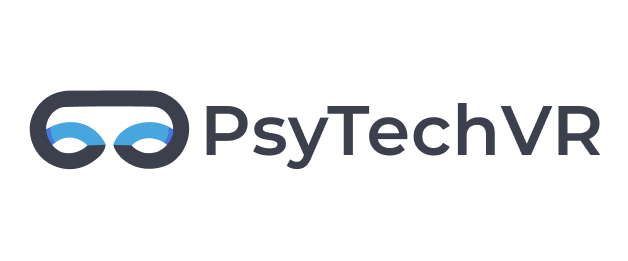Blog - COMPANY LIFE
PsyTech VR for U.S. Veterans
and the U.S. Department
of Veterans Affairs (VA)
and the U.S. Department
of Veterans Affairs (VA)
By Daniel Andreev, Chief Product Officer at PsyTech VR
October 4, 2025
PsyTech VR is now available to behavioral health teams, rehabilitation departments, and clinical care providers within the U.S. Department of Veterans Affairs through Lovell Government Services, a Service-Disabled Veteran-Owned Small Business (SDVOSB). The platform is listed on both the VA Federal Supply Schedule and GSA Advantage, which allows VA facilities to procure it through existing acquisition pathways without new contracting. PsyTech VR is already adopted within several Veterans Integrated Services Networks (VISNs), including VISN 04, VISN 07, and VISN 20.

This availability enables VA clinicians to integrate immersive virtual reality directly into trauma, anxiety, and rehabilitation care pathways for Veterans. The system is a therapist-guided clinical platform designed for structured mental health and wellness therapy. PsyTech VR enhances, rather than replaces, existing VA therapeutic frameworks, working alongside CBT, ERP, EMDR, and mindfulness-based therapies.
Learn more about VR therapy packages here:
View on VA National Acquisition Center
View on GSA
Learn more about VR therapy packages here:
View on VA National Acquisition Center
View on GSA
Clinical Use and Therapist Oversight
PsyTech VR is built for use under the guidance of a qualified provider. The clinician controls every aspect of the session through a dashboard while the patient experiences only the curated therapeutic environment inside the headset. This ensures safety, customization, and clinical precision.
Therapists can adjust intensity, pacing, environment type, and the level of exposure. This allows the system to be used both in early-stage stabilization and in later-stage trauma processing without overwhelming the patient. The platform supports structured exposure therapy for PTSD, trauma-linked anxiety, phobias, OCD, and procedural fears while also offering tools for relaxation, grounding, and emotional self-regulation.
AI-Personalized Safe Places and Relaxation Environments
The platform includes an AI engine that creates custom safe-place environments based on the Veteran’s own description of where they feel secure or emotionally grounded. The AI can generate forests, lakes, underwater environments, mountaintop locations, floating landscapes, or any calming setting described by the patient. These environments can be modified and saved for repeated therapeutic use.

Picture description: AI-generated Safe Place crafted by a mental health provider via the prompt: “forest, lake, sunset, cozy cabin”.
Therapists may also integrate guided breathing exercises, mindfulness meditations, and bilateral stimulation (BLS) directly inside the safe place. This allows stabilization work to be performed before and after exposure, without transitioning to a different system or tool.
AI-Generated Trauma and Exposure Scenarios
In addition to safe places, PsyTech VR can generate AI-driven trauma-linked exposure environments tailored to the Veteran’s lived experience. Clinicians can describe the scenario, and the platform will create it in real-time. This allows for realistic, context-specific therapy without reliance on generic or non-military triggers.
The VR exposure can then be intensified or reduced through therapist-modifiable visual and auditory elements. For instance, the system allows the clinician to add stressors such as screams, explosions, gunfire, sirens, or crowd noise, created through AI-generated sound triggers to reflect situational realism.
The VR exposure can then be intensified or reduced through therapist-modifiable visual and auditory elements. For instance, the system allows the clinician to add stressors such as screams, explosions, gunfire, sirens, or crowd noise, created through AI-generated sound triggers to reflect situational realism.

Picture description: AI-generated Exposure Scenario crafted by a mental health provider via the prompt: “ruined Afghanistan village, inside building”.
Therapist-Controlled Visual and Sensory Modulation
For phobias and procedural fears, environmental conditions can be modified in real-time. In aviation-based scenarios, the provider can change the weather, turbulence level, visibility, icing, lighting, and even deploy oxygen masks to replicate procedural or emergency triggers. These modifications allow graded exposure to be paced clinically for desensitization.
The system includes full sensory pairing:
By synchronizing directional sound and vibration, the environment becomes both immersive and clinically structured. Mental Health provider has access to a Dashboard panel offering real-time session management and control via a Laptop / Tablet.
The system includes full sensory pairing:
- Visual triggers
- Therapist-set sound triggers
- Bilateral vibration for tactile reinforcement
By synchronizing directional sound and vibration, the environment becomes both immersive and clinically structured. Mental Health provider has access to a Dashboard panel offering real-time session management and control via a Laptop / Tablet.

EMDR
PsyTech VR includes an optional EMDR mode that can be activated over either safe-place environments or trauma exposure environments. The therapist can control object speed, shape, motion pattern, and speed to match protocol pacing.
This feature allows clinicians to shift between exposure and regulation phases inside the same environment without interruption.
Customer feedback on G2 platform:
This feature allows clinicians to shift between exposure and regulation phases inside the same environment without interruption.
Customer feedback on G2 platform:
“
The [PsyTechVR’s] EMDR module is a real breakthrough. Normally, asking someone to recall traumatic memories in detail can be overwhelming. With VR, it becomes a lot more manageable. I can guide clients through their memories while they’re immersed in a scene that matches their needs, and the SafePlace AI tool is wonderful for creating a personalized calm spot when they need to ground themselves.
In practice, clients wear the headset and I run the usual EMDR phases — with eye movements, sounds, or taps — while they’re in a virtual environment. Sometimes it’s something related to their trauma, other times it’s a safe space. The combination makes the sessions more engaging and helps them process things in a very effective way.
In practice, clients wear the headset and I run the usual EMDR phases — with eye movements, sounds, or taps — while they’re in a virtual environment. Sometimes it’s something related to their trauma, other times it’s a safe space. The combination makes the sessions more engaging and helps them process things in a very effective way.
Monitoring, Documentation, and Integration
The platform includes a HIPAA-compliant Dashboard for anonymized session logging, questionnaires, and distress assessments. Exposure history, progression tracking, and clinical notes can be exported in PDF format and uploaded to electronic health records, supporting continuity of care.
VA Procurement Availability
Because PsyTech VR is distributed by Lovell Government Services, all VA facilities can obtain the system using existing federal purchasing vehicles. No new standalone contract is required. It is available through both the VA Federal Supply Schedule and GSA Advantage, ensuring full compliance with federal procurement standards and SDVOSB preferences.
Learn more about VR therapy packages here:
View on VA National Acquisition Center
View on GSA
Learn more about VR therapy packages here:
View on VA National Acquisition Center
View on GSA
| | Get in touch We're ready to lead you into the future of mental health Sending this information you agree to share your personal information according and limited by our confidentiality statement. |
Safe and secure

Welcome!
We're excited to offer you the chance to experience the power of PsyTech VR with a FREE Trial!




 PsyTechVR
PsyTechVR


